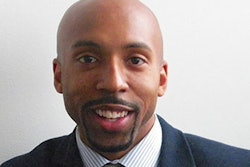At the start of 2020, there was robust availability of online higher education, but no one anticipated that a worldwide pandemic called COVID-19 would soon usher in a new world of distance learning.
“The pandemic opened the door for many faculty to experience teaching online that hadn’t before,” said Dr. Elizabeth M. Luoma, director of the Center for Teaching and Learning at Sacred Heart University. “In general, it’s really opened conversations about flexibility and thinking about how we can use technology to be more inclusive to provide opportunities.”
Making the shift and continued development
Luoma was on Yale University’s faculty initiatives team when the COVID-19 pandemic hit in 2020. Her role included helping faculty learn how to use web conferencing to hold classes online, making sure course materials were on the university’s learning management system, and helping with the pedagogy.
 Dr. Felesia Stukes
Dr. Felesia Stukes
Dr. Felesia Stukes, an associate professor of computer science at Johnson C. Smith University (JCSU), taught Introduction to Network Science spring semester 2020. Network science looks at complex systems and helps people understand how everything is interconnected. Stukes could see a pandemic on the horizon and quickly trained her students for a shift to virtual.
“In my other courses I was doing the same thing,” Stukes said. “I was already using Canvas (a web-based learning management system). I knew we needed to up our usage of it. … I added Zoom once we moved to virtual.”
Stukes said JCSU faculty started recording their lectures and uploading them, so if circumstances made students unable to access the lectures at a specific time, they could still view them. The university purchased PlayPosit, which enabled faculty to embed questions inside the videos to ensure that students watched. She also increased use of interactive textbooks. Today, all JCSU faculty are required to have a virtual component to every course, which Stukes said is a great idea.
Dr. Rebecca S. Natow is the director of the EdD Program in Educational Leadership & Policy Studies and the MSEd Program in Higher Educational Leadership & Policy Studies at Hofstra University. For the decade prior to the pandemic, many EdD programs had shifted to online or hybrid models. When the pandemic forced the university-wide shift, she was asked to do a webinar on teaching and learning online.
“I was also part of a small group of faculty at Hofstra who created a blog, the Virtual Faculty Hallway Chat,” said Natow. “The idea behind the blog was since we’re not seeing each other in person, we’re not having conversations about teaching and what’s working, so let’s put it on a university blog and we can all share our experiences. We had some of our colleagues provide advice on using educational technology.
“Then, the same small group of us were invited by our dean’s office to put together a professional development event, which was on Zoom, which we called Faculty Sharing Circles, where we invited faculty to come and we put them into Zoom breakout rooms,” she continues. “They would share with each other ideas…of how they used technologies to keep students engaged and helped them learn the material.”
When Dr. Gale Gibson-Gayle was hired by St. Francis College in 2018, she was tasked with building out the college’s online education infrastructure and increasing the number of academic programs for non-traditional students and graduate students. She was met with resistance from faculty, who thought distance education would “cannibalize” the in-person courses, but administration realized that distance education is an integral part of higher education’s future.
Gibson-Gayle, now the Vice President of Academic Affairs for Enrollment and Academic Programs and Dean of Graduate Online and Professional Studies, created online faculty certification, which began with about 20 faculty members. St. Francis used Canvas for its learning management system. She began slowly training faculty on pedagogy and other aspects. Only about 35 faculty members total had been trained when the pandemic forced everything online. By the summer of 2020, over 235 faculty completed the basic training.
Technological advances
In the five years that Gibson-Gayle has been at St. Francis, 13 new programs have been introduced, 10 of which are totally online. “We’ve continued to offer professional development,” she said. “We continue to focus on any new technologies and our IT will provide training.”
 Dr. Gale Gibson-Gayle
Dr. Gale Gibson-Gayle
Luoma began her position at Sacred Heart in May 2022. The Center for Teaching and Learning was founded to integrate the teaching supports for faculty with the learning supports for students. Key on the minds of many faculty members at Sacred Heart is the use of artificial intelligence (AI), specifically ChatGPT, said Luoma. ChatGPT is an AI chatbot that launched in November 2022.
“We ask faculty to ground themselves in the learning goals and outcomes of their course [in terms of] how they’re preparing students for real world situations and outcomes after the course,” Luoma said. “If students will be using artificial intelligence in their daily jobs, how are they working with students to learn that technology and learn to use it responsibly. If in the real world after school they will be doing something that won’t rely on artificial intelligence, how are they transparently communicating to students to make sure that they know those tools might not be at their fingertips?”
Natow said technology has increased considerably over these past three years. The recording of class lectures, even those that have returned to in-person, continues at Hofstra. Those can be placed on the learning management system for students to view. She also describes the possibility of polling students anonymously during a class to see how they’re responding to a topic.
Stukes said Zoom has evolved, most notably with increased security and capacity. There are also multiple options that enhance learning. Zoom, for example, now integrates with various learning management systems. Stukes will teach an AI course for non-computer science majors this fall. “I want to broaden participation in computing,” she said.
Forward-facing vision
Enhanced technology can even impact in-person courses. If lectures are recorded, students who miss a class can readily access the material, said Luoma. She further notes that numerous institutions have actively worked to prepare faculty for both online and in-person teaching.
This reflects not just emergency preparedness, but also embracing the flexible models of learning that today’s students desire. Starting fall 2022, a couple of degree programs at Sacred Heart’s College of Business and Technology — MBA and master’s degree in business analytics — will be offered online. Luoma worked with faculty to prepare.
An increase in online and hybrid courses in graduate programming was happening even before the pandemic, but the pandemic accelerated it as people became more experienced and comfortable with online teaching and learning, said Natow. “Online education provides the flexibility that a lot of graduate students need,” she said. “You have a lot more faculty and students who are not only open to online teaching and learning, but in many cases actually prefer it.”
Gibson-Gayle said with expanded online options, St. Francis’ graduate programs have grown exponentially over the past 18 months. These are mostly hybrid programs. In 2018, St. Francis had approximately 50 graduate students, and today, the university boasts about 786. Through technology, students are now able to access and create global learning communities, and faculty can be more collaborative within and across institutions.
“Faculty have found that technology can support the learning,” said Gibson-Gayle. “COVID forced them to look at the technology in a different way to see how they can use it to complement their teaching.”
Fully engaging students in the digital space is a work in progress, said Gibson-Gayle. “The challenge is how to create activities — both synchronous and asynchronous — that they get the students to participate in,” she said. “We created a document so that the faculty can have an idea of what asynchronous activities they can embed in their courses to have the students be more productive.”
At faculty meetings, Stukes has discussed the creation and implementation of more flexible models of learning as well as creating greater access for students with disabilities. She finds that students appreciate a hybrid format with a menu of options for courses as well as for office hours, offering students in-person and virtual office hours, which she sees as beneficial to student mental health.
“The pandemic forced us to be more student-centered,” Stukes said. “The pandemic brought faculty closer to the students who are coming in or existing students, how they as digital natives (individuals brought up in the age of digital technology) experience the world.”


















